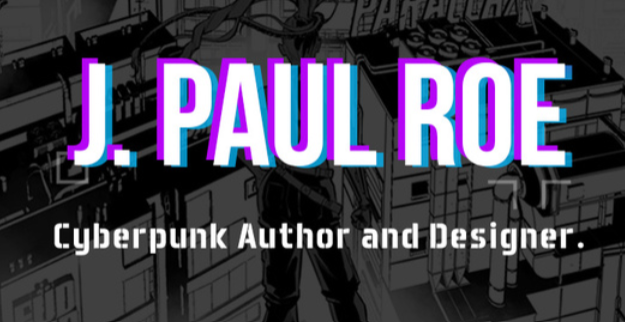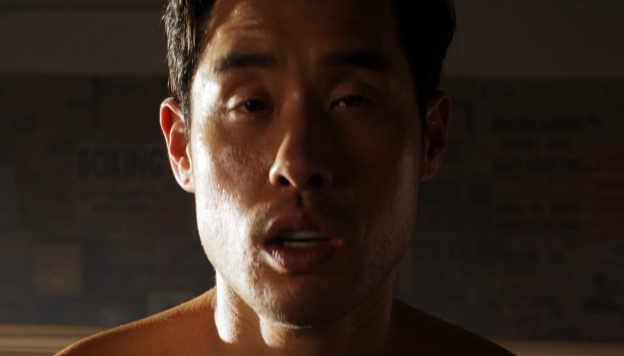What started with Into the BeanStalk has expanded into quite a few parallel series, short stories, and other spinoffs. In this post, I’ll be going over the reading order for the books that are already out, the stories that are coming, and how everything fits together.
What is the Hope Cyberpunk Universe?
The Hope Cyberpunk Universe (HCU) is the name that organically evolved as I continued writing inside the timeline of the protagonist Jack’s books. The name comes from both Hope Megacity, but also the themes of the stories — both in the irony of calling something cyberpunk ‘Hope’, but also calling out my ongoing decisions to make this cyberpunk universe considerably less bleak than the average.
It pretty much began with The Game State, when Jakob was introduced as a main character. His story runs concurrent to ITBS and ITLG, but largely outside of what Jack and her crew are doing.
Now, I’m working on (or publishing) even more stories that run alongside the story surrounding the BeanStalk, so the universe is becoming rather large and varied.
The following graphic illustrates books/stories that are either published or works in progress:
The Flow Chart

The Stories (Thus Far)
I’ll admit, the above graphic can be a little confusing (and I created it!). Turns out that these stories are so interconnected, that there isn’t a precise reading order — or even simple way of denoting their interactions. I’ll try to explain it a bit better as we go story by story.
Starting Points
I would recommend starting with Into the BeanStalk or The Game State, because each of these novels was designed specifically for that purpose. ITBS is the actual starting point (where I began writing in this world), but you may prefer TGS if you want a male protagonist, or a story that’s more about uncovering techno-philosophical mysteries than fighting against corporations.
The Lucky Seven
Even though I started in this universe with ITBS, I actually published The Lucky Seven first. This short story (around 10k words) is a prequal to Jack’s first book, and I released it a month before publishing ITBS to build my email list.
You can absolutely start here if you want to go back to the very beginning of my work surrounding the HCU — but you don’t have to!
Note: I’ve had many requests to expand this short story into a full novel. It’s very likely I’m going to do this in the future, but this expansion is not on my current roadmap.
Into the BeanStalk (ITBS)
This is the beginning of it all. ITBS essentially launched my indie author career, and helped motivate me by winning seven awards to date, and earning quite a few glowing reviews. This novel is currently being adapted into a motion comic and full-cast audio drama. (Thanks to Arcane Fiction!)
This novel is really the catalyst for action, because the wide-sweeping repercussions of discovering the BeanStalk affects (or drives) all of the other stories in this universe.
Into the Looking Glass (ITLG)
Jack’s second book, ITLG continues to explore the BeanStalk and reveals some very important information about the Founders. This novel sets up the huge conclusion, Into the Wishing Star, while seriously shaking up the “known world” of Hope Megacity. It also raises questions about Goodwin’s methods and motives — especially when it comes to sacrificing other people for a cause.
The Game State (TGS)
Jakob’s first book. I’ll reveal something here that I haven’t mentioned elsewhere: Jakob is the most autobiographical character I’ve written into these stories to date. Everything from his military service to his fascination with cars was drawn heavily from my own life experiences. As was the path of philosophical/religious exploration that his story revolves around.
I consider this novel another good starting point, especially if you’re more interested in a male protagonist.
The Yellow Pill (TYP)
Jakob’s second book is a current WIP, and there’s a lot going on in this one. Besides taking the reader to a completely different megacity for the first time (Cascadia), this book begins to uncover how Jakob and Jack are actually on the same path. In TGS, Jakob is tasked with ‘saving the world’, but he doesn’t really understand what that means until he travels all the way across the ruined afterworld of the United States to find out.
If you understand the title I’ve chosen for this book, you’ll get the hint that The Yellow Pill will continue to explore the societal and philosophical backstory of Hope Megacity and the Founders.
Into the Wishing Star (ITWS)
I’ve made some unorthodox plans for this book, namely in that it will probably be the third book for both Jack’s and Jackob’s series’. I may change my mind (or have my mind changed) but I can’t envision a better way to lay down just how intertwined their stories really are.
Will it be a publishing and/or logistical nightmare? I’m not sure. If it starts to look that way, maybe I’ll do some kind of two-parter, in which each part goes heavily into each protagonist’s story.
Without giving any spoilers, I’ll tell you that this book is not intended to be the end of either character’s adventures in the HCU. In fact, it’s meant to kick the universe off an entirely new direction — small hint: the so-far revealed state and location of the Founders has a lot to do with this!
Zona Dust
Zona Dust is a short story of about 8000 words that’s currently being shopped around to sci-fi magazines and anthologies. I’m looking to get it published outside of my own channels to spread awareness of the HCU a little wider. If it doesn’t get picked up in the next six months or so, I’ll publish it myself and start shopping a different story around.
This one stands out because it’s the first HCU story that’s not written in the first-person perspective. Because it actually has five perspective characters, I figured keeping it third-person deep would make it far less confusing to read.
Focusing on a band of afterworld raiders preparing to take down their first cargo airship, this story is quick and explosive while providing an entirely unique viewpoint on the 2160s. Zona Dust also introduces a character that will be making an appearance in Into the Wishing Star.
Cooking with Xen (CWX)
This one has been on my mind for over a year, and I’ve finally nailed down how to tell the story I’ve been wanting to tell.
In short, I wanted to try my hand at ‘cozy cyberpunk’, something that I’m pretty sure doesn’t exist in great quantities. Since I already had a character in my head who wanted to open a high-end restaurant at street level, I thought this was a good mashup. Xen doesn’t have to get into gunfights with gangs or bring down the corpo elites — they just need to figure out how to get real ingredients in a world where most street-level food is either freeze dried or 3D printed.
This quest helps them expose a brand new, powerful technology called ‘nanoglyphing’ that’s slowly filtering into Hope Megacity from the west coast. (Yes, this tech will come into play in ITWS!)
In a way, this story is also how I’m getting that highly-desirable ‘detective noir’ flare into my cyberpunk world — without requiring a guy in a trench coat and fedora. It’s projected to be a novel.
Rockdove
Not gonna lie — I’m really excited about this one. I’m a huge fan of characters who serendipitously show up in a bunch of connected stories. Since Rockdove is my favorite background character from the very first HCU story, The Lucky Seven, I always wanted to bring her back into the larger world.
So much so, that her story is going to explore how she’s been connected to Jack, Monk, Jakob, Katarina, Sister Cass, and even Xen over the course of about fifteen years. This is projected to be either a longer short story or novella.
Yeah, I still write without outlines, but I enjoy the heck out of connecting threads. It’s really one of my favorite things about writing fiction!
That about covers where we are in the Hope Cyberpunk Universe — including what I’m working on now. I hope you’re as excited about all the twist and turns that the HCU is taking, and I look forward to sharing the new stories with you once they’re done!



